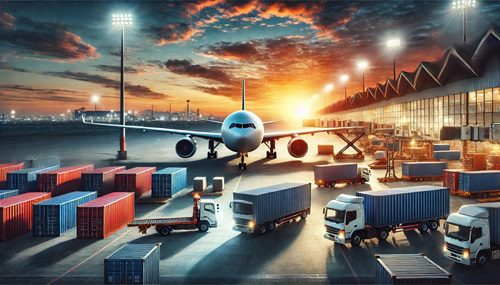 Global air cargo demand recorded a remarkable 8.2% year-on-year increase in November 2024, marking the 16th consecutive month of robust growth, according to the latest International Air Transport Association (IATA) report. This growth trajectory underscores the sector’s resilience, fueled by e-commerce expansion, intense trade activity, and competitive operational efficiencies.
Global air cargo demand recorded a remarkable 8.2% year-on-year increase in November 2024, marking the 16th consecutive month of robust growth, according to the latest International Air Transport Association (IATA) report. This growth trajectory underscores the sector’s resilience, fueled by e-commerce expansion, intense trade activity, and competitive operational efficiencies.
Strong Growth Across Metrics
Measured in cargo tonne-kilometers (CTKs), total demand climbed significantly, with international operations contributing a 9.5% surge compared to November 2023. Cargo capacity, tracked in available cargo tonne-kilometers (ACTKs), grew by 4.6%, revealing a healthy balance between demand and operational expansion.
IATA’s Director General Willie Walsh emphasized the sector’s positive momentum: “November showcased the strength of air cargo with an 8.2% rise in demand—nearly double the 4.6% capacity growth. Lower fuel costs, reduced by 22% year-on-year, and tight market conditions sustained a 7.8% yield growth. We are closing 2024 on a high note, with cautious optimism for 2025, barring challenges like inflation, geopolitical tensions, and trade uncertainties.”
Regional Performance: Asia-Pacific Leads
Among regions, Asia-Pacific airlines posted the most vigorous year-on-year growth at 13.2%, bolstered by e-commerce demand and robust intra-Asia trade. The Latin American market followed closely with an 11.6% rise, while North America and Europe recorded solid increases of 6.9% and 5.6%, respectively. In contrast, African airlines experienced a modest decline of 0.7%, highlighting challenges in the region’s air cargo dynamics.
| Region | Demand (CTK) | Capacity (ACTK) |
|---|---|---|
| Asia-Pacific | +13.2% | +9.4% |
| North America | +6.9% | +2.2% |
| Europe | +5.6% | +4.3% |
| Latin America | +11.6% | +6.4% |
| Middle East | +3.6% | -0.6% |
| Africa | -0.7% | +0.4% |
Key Drivers of Growth
- Industrial Production & Trade:
Industrial output rose by 2.1% year-on-year in October, while global goods trade expanded for the seventh consecutive month (+1.6%), reflecting resilient supply chain activity. - E-commerce Expansion:
The rising demand for express shipping and e-commerce fulfilment in markets like the US, Europe, and Asia has been pivotal. Trade lanes, such as Asia-North America (+13%) and Europe-Asia (+12.9%), have seen sustained growth for over a year. - Economic Indicators:
- Global manufacturing output, measured by the Purchasing Managers Index (PMI), remained above 50, signalling expansion.
- Inflation trends were mixed: the US and EU saw marginal increases in headline inflation, while China’s consumer inflation fell to 0.2%, raising concerns about economic deceleration.
Trade Lane Highlights
Key trade routes experienced double-digit growth, with Asia dominating the market.
- Asia-North America: 13% growth, driven by US holiday retail demand.
- Europe-Asia: 12.9%, reflecting strong industrial ties and tech sector activity.
- Within Asia: 12.2%, showcasing robust intra-regional trade integration.
These routes underline air cargo’s pivotal role in global trade, particularly as ocean freight faces capacity constraints.
Challenges Ahead
Despite strong momentum, the industry faces potential headwinds:
- Inflationary Pressures: Rising costs in key regions could impact consumer spending and logistics expenses.
- Geopolitical Risks: Trade tensions and regional instabilities may disrupt established supply chains.
- Global Trade Uncertainty: With export orders remaining below PMI’s 50-point threshold, there’s caution about sustained demand.
Outlook for 2025
The sector’s prospects for 2025 remain cautiously optimistic. Strong fundamentals in e-commerce and industrial production are likely to drive demand. However, IATA urges stakeholders to monitor risks, emphasizing adaptive strategies and investments in capacity and sustainability.
For a deeper dive into IATA’s Air Cargo Market Analysis, visit their official report.
Written by: Octavia Koo



















